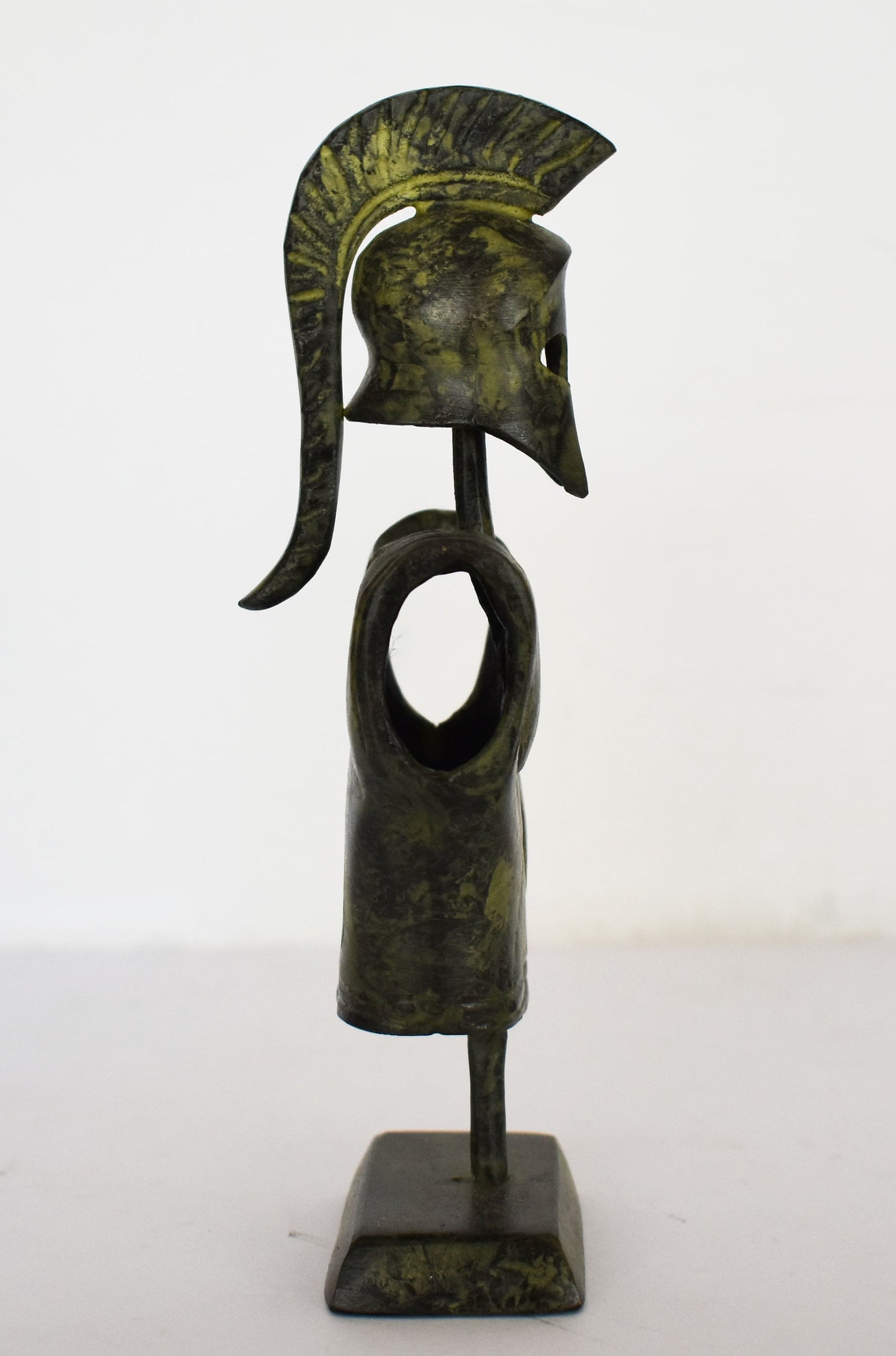Gallery Demeter
Spartan Hoplite's Armor, Panoply - Battle of Thermopylae - Hot Gates - King Leonidas and 300 against Persian Army - pure Bronze Sculpture
Spartan Hoplite's Armor, Panoply - Battle of Thermopylae - Hot Gates - King Leonidas and 300 against Persian Army - pure Bronze Sculpture
Couldn't load pickup availability
Condition: New, Made in Greece.
Material: Pure Bronze
Height: 15,5 cm - 6,1 inches
Width: 5,5 cm - 2,2 inches
Length: 4 cm - 1,6 inches
Weight: 270 g
The Battle of Thermopylae was fought between an alliance of Greek city-states, led by King Leonidas I of Sparta, and the Achaemenid Empire of Xerxes I. It was fought over the course of three days, during the second Persian invasion of Greece. The battle took place simultaneously with the naval battle at Artemisium. It was held at the narrow coastal pass of Thermopylae ("The Hot Gates") in August or September 480 BC. The Persian invasion was a delayed response to the defeat of the first Persian invasion of Greece, which had been ended by the Athenian victory at the Battle of Marathon in 490 BC. By 480 BC, Xerxes had amassed a massive army and navy and set out to conquer all of Greece. The Athenian politician and general Themistocles had proposed that the allied Greeks block the advance of the Persian army at the pass of Thermopylae, while simultaneously blocking the Persian navy at the Straits of Artemisium.
A Greek force of approximately 7,000 men marched north to block the pass in the middle of 480 BC. The Persian army was rumoured to have numbered over one million soldiers. Herodotus, a contemporary writer put the Persian army strength as one million and went to great pains to describe how they were counted in groups of Ten thousand at a review of the troops. Simonides went as far as to put the Persian number at Three million. Today, it is considered to have been much smaller. Scholars report various figures ranging between about 100,000 and 150,000 soldiers. The Persian army arrived at the pass in late August or early September. The vastly outnumbered Greeks held off the Persians for seven days (including three of battle) before the rear-guard was annihilated in one of history's most famous last stands. During two full days of battle, the small force led by Leonidas blocked the only road by which the massive Persian army could pass. After the second day, a local resident named Ephialtes betrayed the Greeks by revealing a small path used by shepherds. It led the Persians behind the Greek lines. Leonidas, aware that his force was being outflanked, dismissed the bulk of the Greek army and remained to guard their retreat with 300 Spartans and 700 Thespians. It has been reported that others also remained, including up to 900 helots and 400 Thebans. The remaining soldiers fought to the death. Most of the Thebans reportedly surrendered.
Themistocles was in command of the Greek Navy at Artemisium when he received news that the Persians had taken the pass at Thermopylae. Since the Greek strategy required both Thermopylae and Artemisium to be held, given their losses, it was decided to withdraw to Salamis. The Persians overran Boeotia and then captured the evacuated city of Athens. The Greek fleet—seeking a decisive victory over the Persian armada—attacked and defeated the invaders at the Battle of Salamis in late 480 BC. Wary of being trapped in Europe, Xerxes withdrew with much of his army to Asia (losing most to starvation and disease), leaving Mardonius to attempt to complete the conquest of Greece. However, the following year saw a Greek army decisively defeat the Persians at the Battle of Plataea, thereby ending the Persian invasion.
Both ancient and modern writers have used the Battle of Thermopylae as an example of the power of a patriotic army defending its native soil. The performance of the defenders is also used as an example of the advantages of training, equipment, and good use of terrain as force multipliers and has become a symbol of courage against overwhelming odds.
These armor, as with all our other bronze items, are cast in Greece, using the traditional 'lost wax' method. As they are not mass-produced, there will inevitably be slight variations in patination and colouring. Each piece is, therefore, unique. They range from 'battle-scarred' (rough surface with the occasional 'hole') to 'smooth'. Also, please allow for variations of a millimetre or two from the specified height.
ΘEO 133Β ΘΩΡΑΚΑΣ - 12,91









